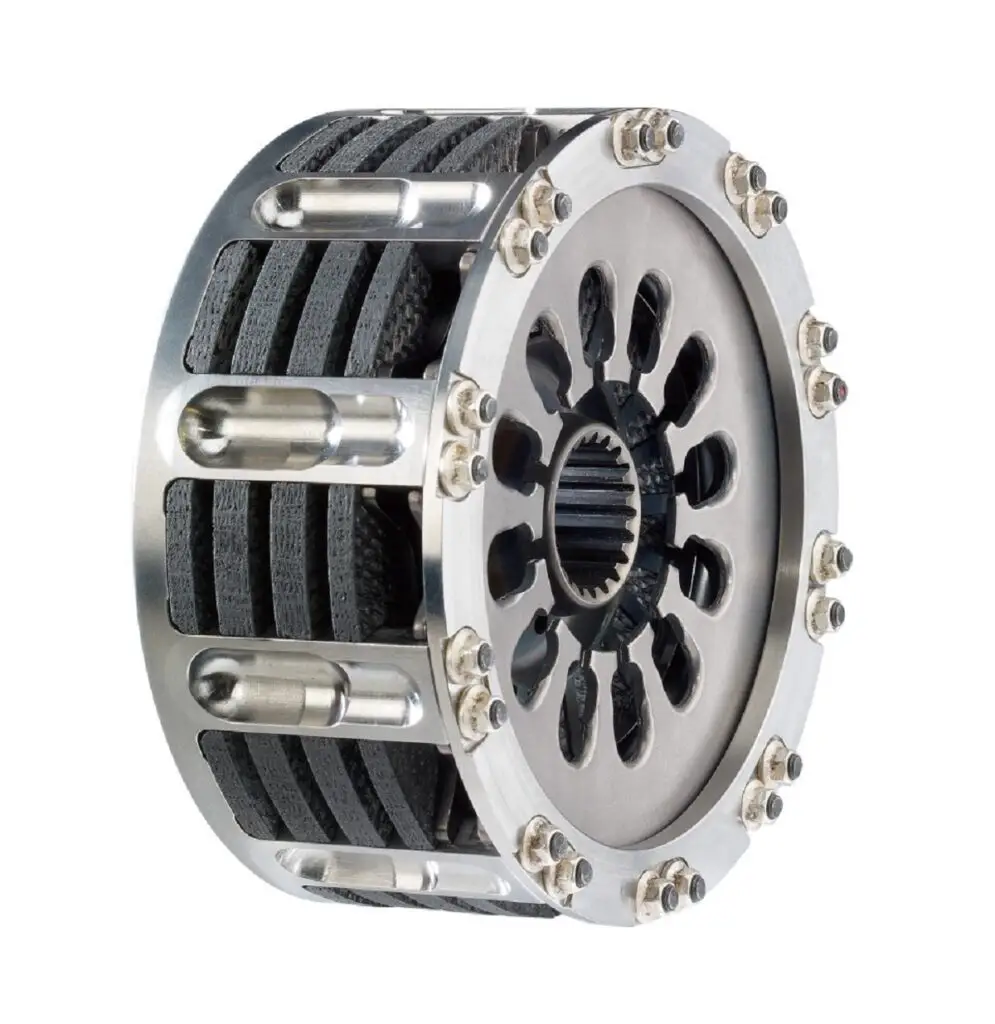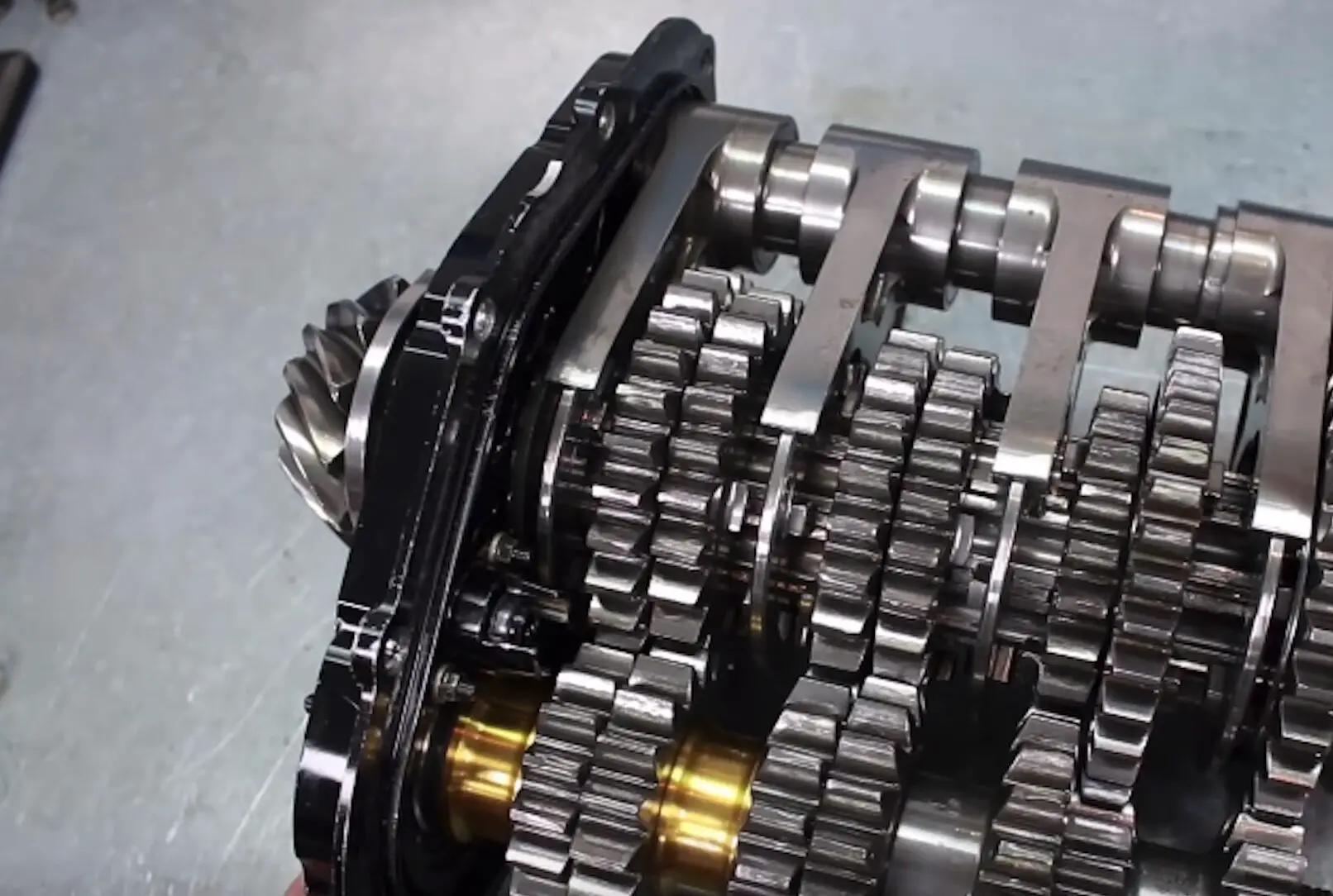There is nothing quite like the sound of 20 F1 cars roaring away when the start lights go out. Even though it is not the same screaming thunder as the old V12 and V8 engines, the modern cars still produce a sound that can stir the heart of an F1 fanatic.
As they race for the 1st corner changing down a gear to keep the optimum torque available and then accelerate out and into the next straight. Have you ever wondered how the F1 Gears work and what is happening in the engine when it is managing the process?
In this article we take a look at an often-ignored part of the modern F1 engine – the gearbox and clutch system.
How Do F1 Gears Change
Not only does changing the gears at the optimal moment guarantee the fastest forward motion and access to the best available power, it is also a requirement of theF1 regulations.
The F1 regs stipulates that the rpm of an F1 car’s engine must not exceed 15000 RPM.
Not only do F1 drivers change gears more than once every two seconds, but they will often select a gear at the maximum rev range. This places enormous loads on the system. Their design handles these in the normal course of events.
F1 car gearboxes use a sequential semi-automatic transmission. Effectively this means that the driver delivers an instruction to the onboard computer (GCU) which processes the gear change on behalf of the driver.
Being a semi-automatic, sequential gear system means that the driver has to always change through each gear in the sequence. He cannot jump from 4th to 2nd for example. In this instance of he wanted to change down to 2nd he would first have to engage 3rd.
The driver controls the gears by using “flappy paddles” on the steering wheel. The driver activates the paddles which send an instruction to the gearbox computer – gearbox control unit (GCU).
The GCU activates the “change cylinder.” This device fires the gears up or down.
When the F1 driver selects 1st gear he activates the clutch. The system handles all future gear changes without the manual clutch.
Where is the Gearbox in an F1 Car?
The driver sits in the carbon reinforced “tub” front section of an F1 car. With other protection measures this protects the driver from all impacts.
The engine is mounted on four studs behind the driver. The engine bolts directly onto the tub.
The gearbox is mounted directly onto the back of the engine. The differential is mounted at the back of the gearbox, and it is that which drives the rear wheels.
A main shaft connecting the gearbox to the differential provides the power to the diff and ultimately the rear wheels.
Each if these parts are “stressed members” meaning that they are part of the chassis. This means that the rear suspension is mounted directly onto the gearbox.
Do F1 Gears Have a Clutch?

The clutch connects the “lay shaft” in the gearbox with the driveshaft from the engine. The clutch disengages the two shafts and so prevents the gearbox from turning.
Simply put the clutch separates the engine from the gearbox. As with a standard road car this allows the engine to run while the car is standing still.
The driver does not activate the clutch to change the cars gear. He only uses the clutch to pull away from a stop. This may be at the start of a race, after a pit stop or if the driver comes to a stop on the track.
Only two manufacturers make F1 clutches (AP Racing and Facts). A clutch typically costs around $7,500.
The clutch weighs just under 1.4kgs. Clutch plates in F1 cars are very small measuring approximately 97 mm’s/
The clutch can heat up to 500o.
How Many F1 Gears Does a Car Have
Formula 1 cars have eight forward gears and one mandatory reverse gear.
Do F1 Drivers Use Both Feet?
Typically, drivers use one foot on the gas pedal and one on the brake. This allows them faster reaction times then when they have to move one foot from the gas pedal to the brake, or visa versa.
The main reason why most road drivers don’t do this is quite simple. By resting one foot on the brake pedal it accelerates the wear on the brake pads. F1 drivers don’t have the same concern because their brakes only need to last for one session.
Conclusion
F1 gearboxes are relatively simple units. Despite this they are incredibly robust to ensure that they can handle the extreme stresses imposed on them in an F1 race.

